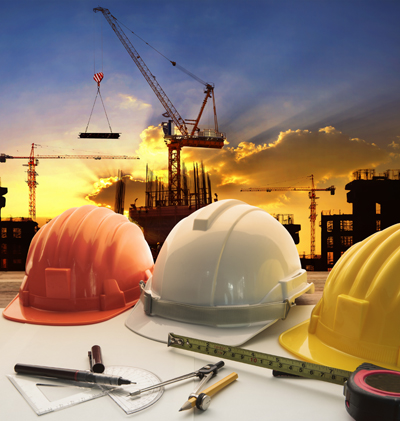 Seasonally adjusted construction employment rose from November to December in 30 states and the District of Columbia and declined in 20 states, according to AGC’s analysis of data BLS posted on Tuesday. California added the most construction jobs over the month (7,500 jobs, 0.8%), followed by New York (6,400 jobs, 1.7%), Pennsylvania (4,600 jobs, 1.8%), Louisiana (3,300 jobs, 2.6%), and Florida (3,300 jobs, 0.5%). The largest percentage gain occurred in Louisiana, followed by Arkansas (1.8%, 1,000 jobs), Pennsylvania, Rhode Island (1.7%, 400 jobs), and New York. Missouri experienced the largest decline in construction jobs in December (-4,400 jobs, -3.0%), followed by Washington (-3,700 jobs, -1.6%), New Jersey (-3,400 jobs, -2.2%), and Minnesota (-2,600 jobs, -2.0%). North Dakota had the largest percentage loss for the month (-6.4%, -1,900 jobs), followed by Missouri and Alaska (-2.8%, -500 jobs). In 2022, 40 states added construction jobs, while industry employment declined in nine states and D.C. Employment was flat in Iowa. California added the most jobs over the year (41,100 jobs, 4.6%), followed by Florida (25,500 jobs, 4.4%), Texas (18,300 jobs, 2.4%), New York (13,100 jobs, 3.5%), Tennessee (12,900 jobs, 9.2%), and Utah (12,900 jobs, 10.4%). Rhode Island had the largest percentage increase (17.3%, 3,500 jobs), followed by Nevada (13.4%, 12,800 jobs), Nebraska (10.9%, 6,100 jobs), Utah, and Tennessee. New Jersey lost the largest number and percentage of construction jobs over 12 months (-8,900 jobs, -5.5%), followed by South Carolina (-4,900 jobs, -4.7%). (For D.C., Delaware, and Hawaii, which have few mining or logging jobs, BLS posts combined totals with construction; AGC treats the changes as all from construction.)
Seasonally adjusted construction employment rose from November to December in 30 states and the District of Columbia and declined in 20 states, according to AGC’s analysis of data BLS posted on Tuesday. California added the most construction jobs over the month (7,500 jobs, 0.8%), followed by New York (6,400 jobs, 1.7%), Pennsylvania (4,600 jobs, 1.8%), Louisiana (3,300 jobs, 2.6%), and Florida (3,300 jobs, 0.5%). The largest percentage gain occurred in Louisiana, followed by Arkansas (1.8%, 1,000 jobs), Pennsylvania, Rhode Island (1.7%, 400 jobs), and New York. Missouri experienced the largest decline in construction jobs in December (-4,400 jobs, -3.0%), followed by Washington (-3,700 jobs, -1.6%), New Jersey (-3,400 jobs, -2.2%), and Minnesota (-2,600 jobs, -2.0%). North Dakota had the largest percentage loss for the month (-6.4%, -1,900 jobs), followed by Missouri and Alaska (-2.8%, -500 jobs). In 2022, 40 states added construction jobs, while industry employment declined in nine states and D.C. Employment was flat in Iowa. California added the most jobs over the year (41,100 jobs, 4.6%), followed by Florida (25,500 jobs, 4.4%), Texas (18,300 jobs, 2.4%), New York (13,100 jobs, 3.5%), Tennessee (12,900 jobs, 9.2%), and Utah (12,900 jobs, 10.4%). Rhode Island had the largest percentage increase (17.3%, 3,500 jobs), followed by Nevada (13.4%, 12,800 jobs), Nebraska (10.9%, 6,100 jobs), Utah, and Tennessee. New Jersey lost the largest number and percentage of construction jobs over 12 months (-8,900 jobs, -5.5%), followed by South Carolina (-4,900 jobs, -4.7%). (For D.C., Delaware, and Hawaii, which have few mining or logging jobs, BLS posts combined totals with construction; AGC treats the changes as all from construction.)
Total construction starts jumped 27% from November to December at a seasonally adjusted annual rate and 15% for all of 2022 compared to 2021, Dodge Construction Network reported on Tuesday. Nonresidential building starts increased 51% for the month and 38% for the full year, with manufacturing starts up 596% and 185%, respectively; institutional, 11% and 19%; and commercial, -10% and 25%. Nonbuilding starts rose 30% and 19%, respectively, with utility/gas starts up for the month and up 19% for the full year; miscellaneous, 19% and 0; highway and bridge, 10% and 25%; and environmental public works, -4% and 15%. Residential starts were flat for the month and down 3% for the full year, with single-family down 5% and 13%, respectively, and multifamily up 8% and 25%.
The Architecture Billings Index (ABI) registered a score of 47.5 in December, up from 46.6 in November but the third-straight reading below 50, the American Institute of Architects (AIA) reported on Wednesday. AIA calls the index “a leading economic indicator that leads nonresidential construction activity by approximately 9-12 months.” The ABI is derived from the share of responding architecture firms that report a gain in billings over the previous month less the share reporting a decline in billings, presented on a 0-to-100 scale. Any score below 50 means more firms reported decreased billings than increased billings. Readings for practice specialties (based on three-month averages) varied: mixed practice, 54.8 (up from 53.3 in November); institutional, 47.3 (down from 48.0); commercial/industrial, 45.2 (up from 44.8); and residential (mainly multifamily), 44.3 (down from 44.7).
Inflation-adjusted gross domestic product (real GDP) rose 2.9% at a seasonally adjusted annual rate in the fourth quarter (Q4) of 2022, the Bureau of Economic Analysis (BEA) reported on Thursday, following a 3.2% gain in Q3. Real residential investment in permanent-site structures plunged 27% (single-family structures, -10%; multifamily, -2.6%). Real gross private domestic investment in nonresidential structures edged up 0.4% (commercial and health care, -6.4%; manufacturing, 11%; power and communication, -6.6%; other non-mining structures, 4.4%; and wells and mining structures, 11%). Real government gross investment in structures rose 1.1%, including federal investment for defense structures, up 3.5%; nondefense structures, up 11%; and state and local structures investment, up 0.7%. The GDP price index increased 3.5%, with price indexes for nonresidential structures investment up 6.7%; residential investment, 7.7%; and government investment in structures, 6.4%.
“The Strange and Awful Path of Productivity in the U.S. Construction Sector” is the title of a National Bureau of Economic Research working paper posted this month by University of Chicago economists Austan Goolsbee and Chad Syverson. Readers are invited to submit explanations, critiques, or other comments to ken.simonson@agc.org.


